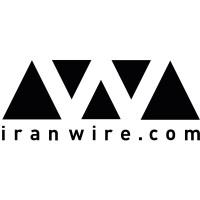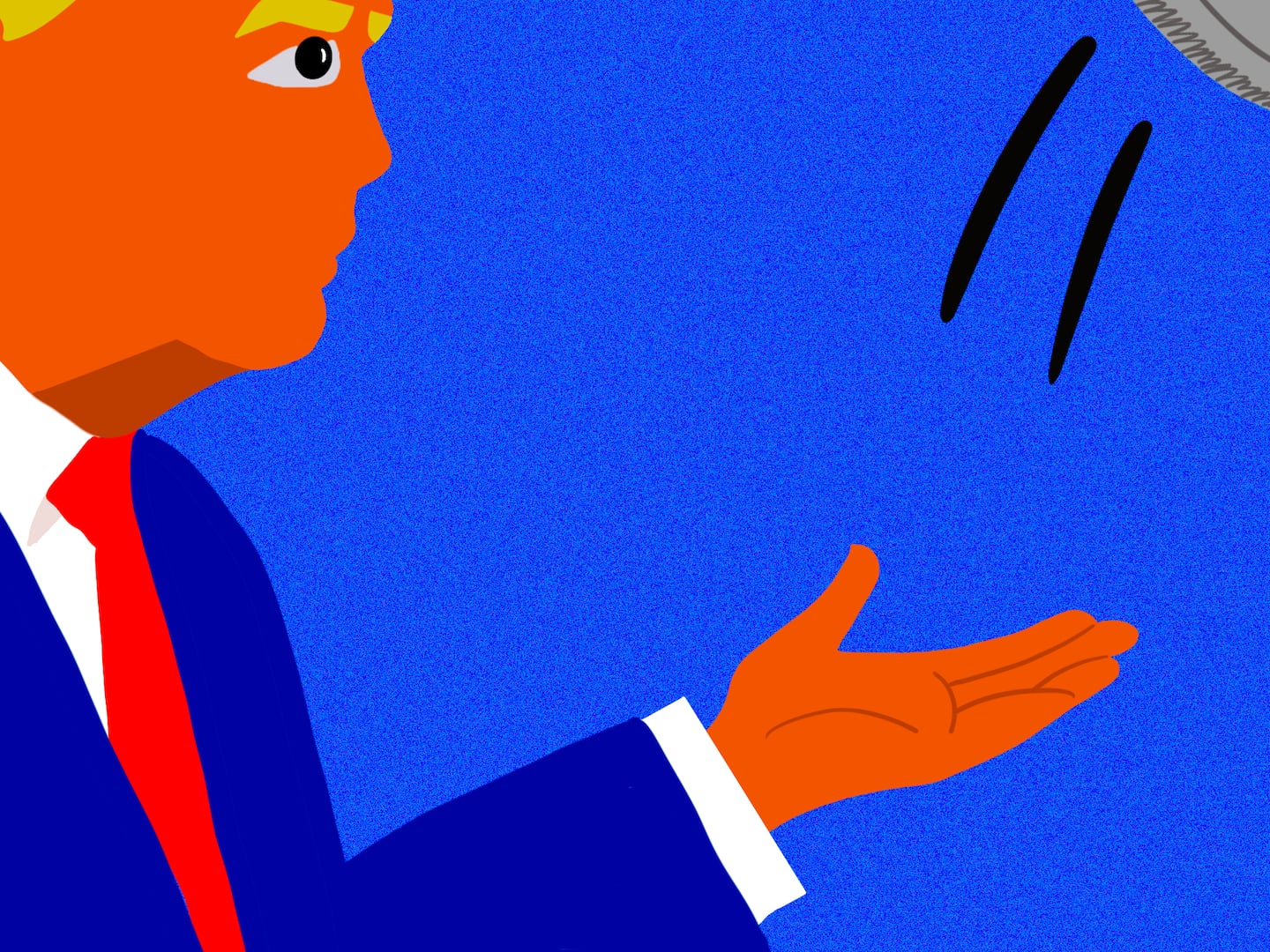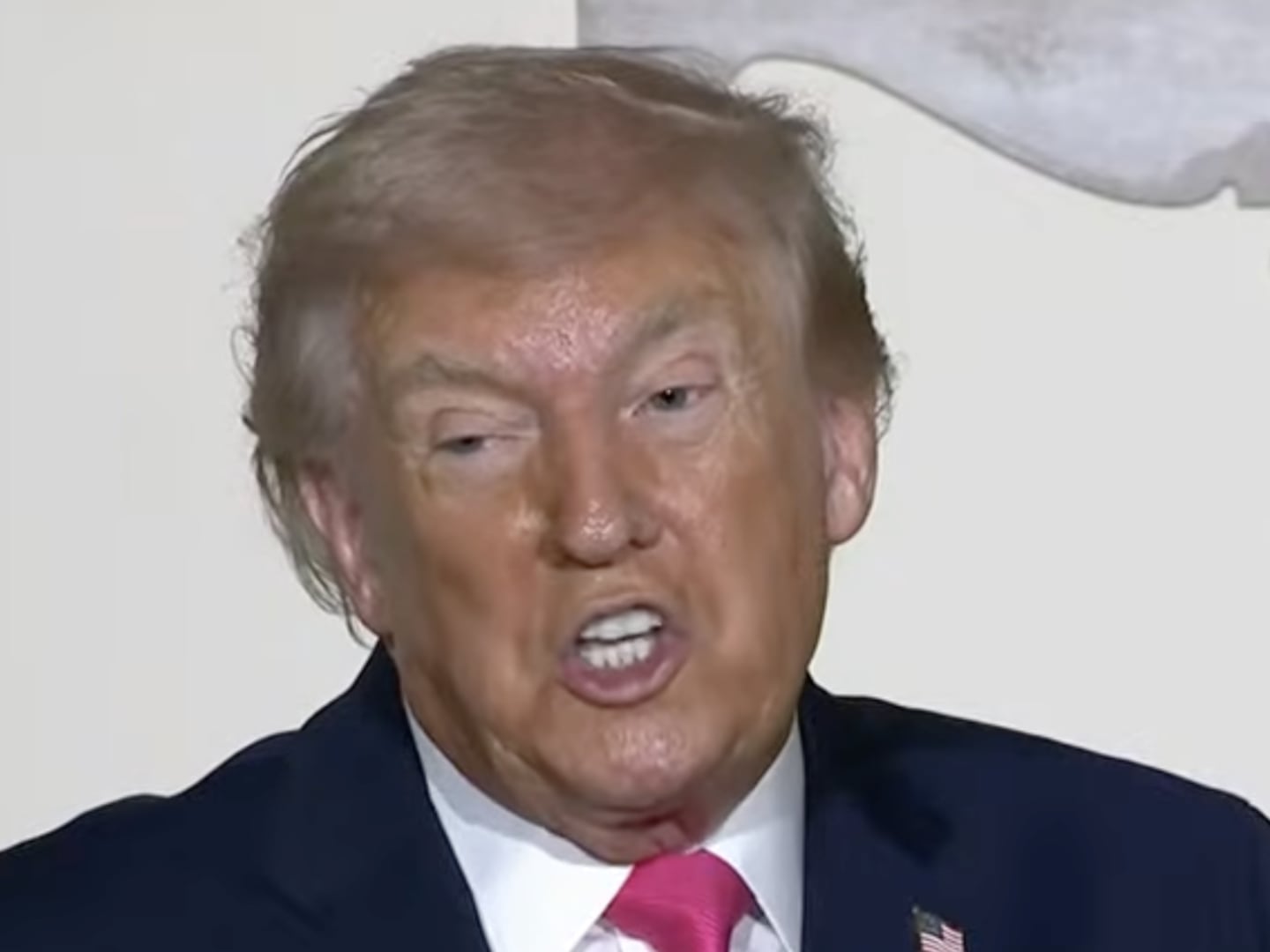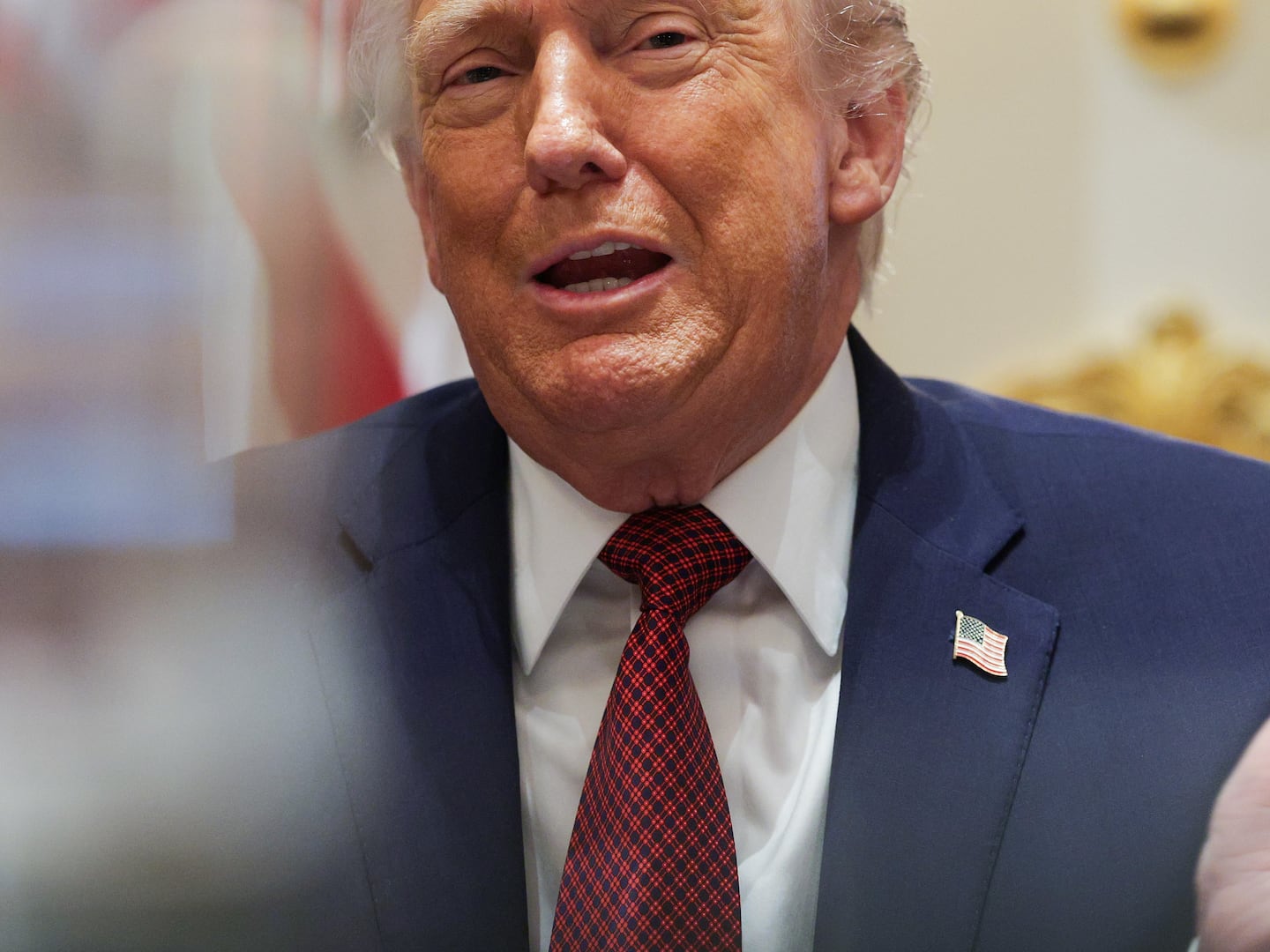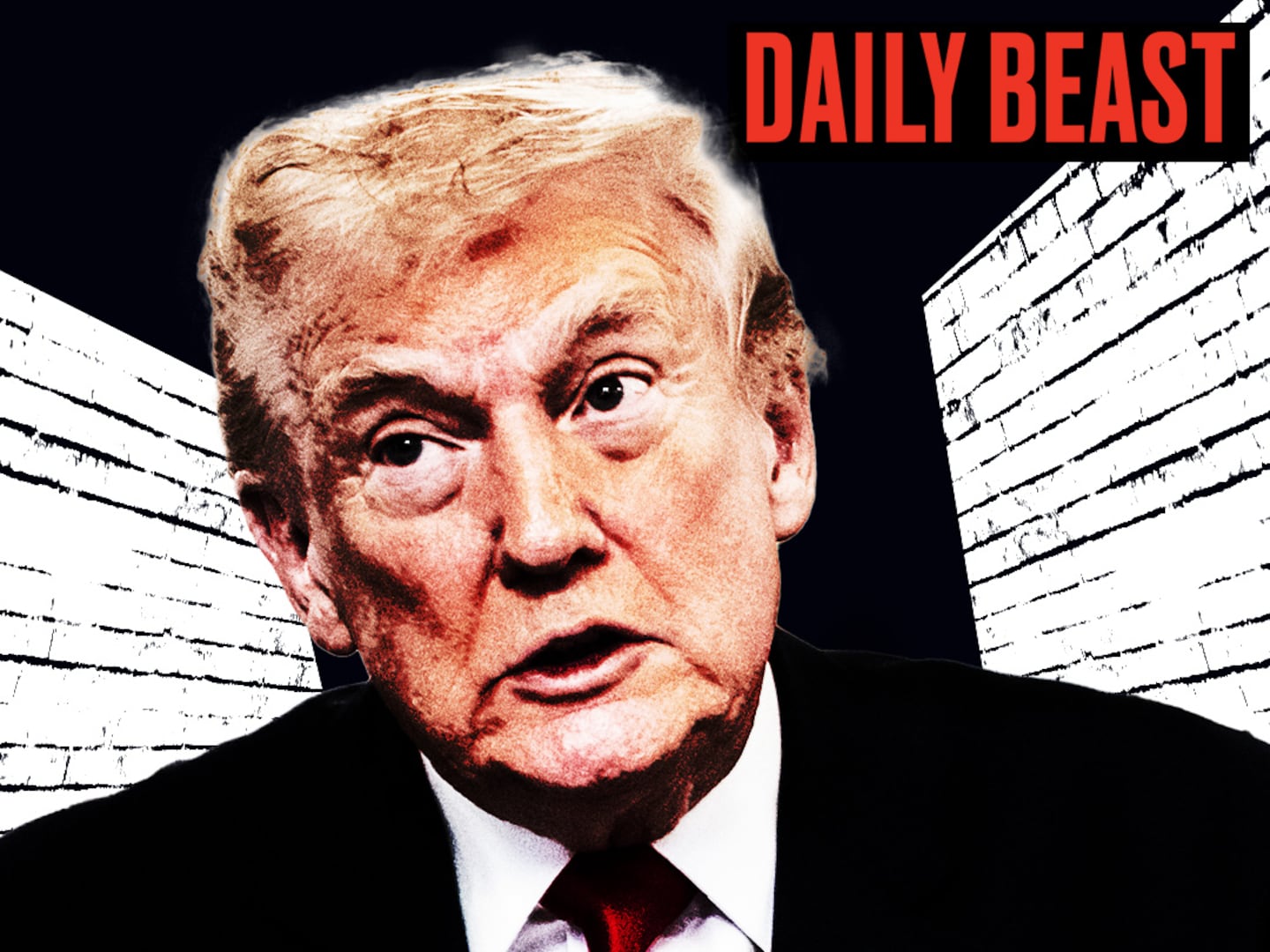Updated 04:00 a.m. EST, December 31, 2017
Protests have erupted all over Iran, and the Trump administration has been quick to claim vindication for its tough talk about the regime there.
Previously, U.S. President Donald Trump has accused Iran of spreading “death destruction and chaos all around the globe." On Saturday he posted segments of his address to the United Nations in September, saying, "other than the vast military power of the United States... Iran’s people are what their leaders fear the most," adding, "Oppressive regimes cannot endure forever, and the day will come when the Iranian people will face a choice. The world is watching!"
But it is far from clear whether such verbal support from the Trump administration will help or hurt the cause of the Iranian protesters, whose grievances are mainly home grown. Philip Gordon of the Council on Foreign Relations argues in the New York Times that Trump's efforts to scuttle the nuclear deal and reimpose heavy sanctions "will not be doing the opposition a favor but instead giving Iranians a reason to rally to—rather than work against—the government they might otherwise despise."
When American politicians cheer from the sidelines, that only bolster's regime claims that the real problem is foreign subversion. In fact, most Iranian officials are blaming anybody but themselves. And deeper U.S. involvement is, to say the least, problematic.
Washington's record of encouraging uprisings against tyrants—but doing so without the means, the skills, or the will to give the protesters the backing they need to usher in a stable change of regime—is long and tragic. It stretches from the Hungarian revolution in the 1950s to the uprisings in Libya, Egypt, and Syria earlier this decade. None of those turned out well. When the U.S. has intervened directly to change a regime, as in Iraq, the results have been still worse.
And while it is clear that many Iranians are sick of their theocratic government, the country's politics are deeply complicated, as these combined dispatches from our partners at IranWire make clear.
—Christopher Dickey, World News Editor
UPDATED SUNDAY, DEC. 31. WITH IRANWIRE VIDEOS.
THOUSANDS OF IRANIANS have taken to the streets in cities across the country to protest against the rising cost of living and economic corruption. But what started out Thursday as demonstrations against a very specific set of grievances has quickly turned into an expression of a more general malaise. On Friday, in addition to protesting against corruption, many people shouted out anti-government and anti-regime slogans and sentiments, expressing a more widespread anger about life in the Islamic Republic.
Small groups of people who had lost their savings in fraudulent banking schemes have staged intermittent protests in some of the country’s provincial cities over the last few months. But, on Thursday Iran’s second biggest city, Mashhad, was the epicenter of a much larger protest, which then spread to the nearby city of Neishabur.
All indications suggest that the Mashhad protests had been organized initially by supporters of the hard-line faction of the Iranian regime in an attempt to target the pro-reform government of President Hassan Rouhani. But soon the protests spiraled out of the control of the initial organizers. As hundreds gathered in Mashhad’s Martyrs Square, the chants of “Death to Rouhani” and “Death to high prices” soon gave way to chants targeting the entire regime. “Death to Dictator,” a favorite slogan of the mass 2009 movement, made a comeback.
And, as in 2009, many nationalistic chants lashed out against the regime’s military operations in the region. To the outside observer, issues of military might and economic deprivation might not seem related, but for the Iranian public, the millions of dollars that the Islamic Republic spends on its allies in the region are directly linked to unfavorable economic conditions at home. “No Gaza, No Lebanon, I will give my life for Iran,” some shouted, as well as “Leave Syria [or Palestine] alone, do something for us!” Some went even further and praised Reza Shah, the strongman founder of the Pahlavi dynasty that ruled Iran from 1925 to 1979, whom some Iranians regard as an example of competent governance.
Mohammad Taqi Rahbar, acting prayer leader of Isfahan, told IranWire he was shocked by such chants among the protesters. "If they only shouted about the high prices, unemployment and taking care of the downtrodden, then I would say, yes, this is what people want. But when they praise the Shah of the tyrannical regime — and everybody knows what he did to Islam and to people’s honor and faith — then it is not acceptable in our revolutionary and Islamic society, and seems suspicious."
A New Kind of Protest
Protesters also targeted the powerful and wealthy Larijani family. The family has itself been the target of a campaign by allies of former president Mahmoud Ahmadinejad, whose attacks on the Larijani brothers — two of whom head the Iranian parliament and judiciary — resulted in Supreme Leader Ayatollah Khamenei publicly rebuking Ahmadinejad and accusing him of being opportunistic. While the Larijanis belong to the conservative faction of the Iranian regime, over the last few years they’ve been in something of an alliance with the Rouhani government against the more ultra-hardline factions.
The Mashhad protesters also coined a new slogan: “You are using religion; you are ruining the people” — revealing just how far people dared come to questioning the very foundations of the Islamic Republic. Security forces attacked people at the rallies, although less violently than many expected. (On Sunday there were reports the Revolutionary Guards would use an iron fist to suppress demonstrations, and two people had been shot.)
The government’s initial response was to dismiss the protests. Rouhani’s right-hand man, Vice President Eshagh Jahangiri responded with: “All the economic indicators are good even if a couple of commodities have become a bit expensive.” He claimed that economic issues had been “used as an excuse” by those who organized the protests, and warned against the dangers of the protests spreading.
“When the streets see social movements and political action,” he said, “they can go anywhere, beyond the control of those who organized them in the first place.”
The protests left most politicians befuddled. Some reformist politicians regarded the rallies as suspicious, while others defended the constitutional right to protest and said the economic concerns were genuine.
“Marching without the bearing of arms is a fundamental right of the people,” Mahmoud Sadeghi, a popular Tehran MP, tweeted. “The government [of Rouhani] should respect people’s rights in action, not words.”
Mostafa Tajzadeh, a former deputy minister under the reformist President Mohammad Khatami and who served a prison sentence from 2009 to 2016, said the protests show the “increasing distrust and desperation of people from all walks of life.”
One left-wing activist who took part in the Mashhad protests spoke to IranWire on the condition of anonymity. “It’s not surprising that the neoliberal policies of Rouhani lead to economic discontent,” she said. “We knew that the regime people were behind fomenting the first protests but the people’s pain is real and they are fed up.”
Videos of the protests were quickly circulated. #Mashhad the most used hashtag in Iran on Friday, quickly racking up more than 62,000 tweets sent out from across the country.
The sharing of footage and images might have played a role in the protests spreading to cities across the country on Friday.
The northwestern city of Kermanshah, close to the border with Iraq and home to many Kurdish citizens, saw some of the largest protests. Demonstrators went through the town shouting out similar grievances to those voiced in Mashhad, as well as additional ones, including “Political prisoners should be freed!” and “Independence, Freedom, the Iranian Republic.” The latter, a play on the dominant slogan from the 1979 revolution, is another favorite from 2009. Others directly attacked Supreme Leader Ayatollah Khamenei, shouting out: “The nation is impoverished; His Highness is playing God.” Some people approached police forces and shouted out: “Police, support us!” One video showed a young man talking to a police officer about how he had been left unemployed despite holding two Master’s degrees.
The Realities of Unemployment — and a Chance to Hear People’s Voices
Unemployment is indeed among the key grievances against Rouhani. The official unemployment rate stands at 12.4 percent, with millions more in irregular employment without adequate pay. University graduates are routinely forced into underemployment just to make ends meet. And matters are made worse by the fact that the ministers Rouhani has put in charge of the economy are for the most part economically right-wing.
On Friday, protests also rocked the central cities of Qom, Qazvin, Isfahan and Khorramabad, the western city of Hamedan, the northeastern city of Quchan, the southwestern city of Ahvaz, and Rasht and Saari in the Caspian littoral region. Interestingly enough, some of the most radical slogans came from Qom which, along with Mashhad — where the protests started — is one of the main centers of Iran’s religious hierarchy. Qom protesters shouted out praise for Reza Shah and targeted unemployment with the chant: “Youth are unemployed; the Mullahs are riding on their back.”
In Kermanshah, protesters also tore down posters advertising the regime-organized marches on December 30, the anniversary of the 2009 pro-regime demonstration that took place six months after the unrest in June that year. Even in less volatile times, the December 30 protest is usually an occasion for hardline supporters of the regime to flex their muscles and bring their forces out.
Heavily-guarded anti-riot security forces were on the streets of the capital Tehran on Friday morning, showing that the government is worried that protests will spread there.
Some reformists have called on the government to recognize people’s voice before it is too late and the situation escalates even further.
“People are protesting against the problems in the country’s grand management system,” Sadeghi tweeted on Friday. “Instead of trying to shut them up and make them political and factional, let’s hear the people’s voice and do something about it.”
Further Updates:
In some cities, like Mashhad and Kermanshah, the protests turned violent when the police tried to disperse the demonstrations. About 300 demonstrators gathered in Kermanshah after what the semi-official Fars news agency, affiliated with the Revolutionary Guards, characterized as “a call by the counter-revolution.” They shouted “Political prisoners should be freed” and “Freedom or Death!”, while destroying public property.
Most Iranians received news of the demonstrations via the Telegram encrypted texting app. The social media platform, with more than 20 million users, is one of the most popular messaging apps in Iran. It was even said that the protests in Mashhad were first reported by Telegram channels run by the Basij, a paramilitary vigilante organization associated with the Revolutionary Guards.
Do as China Does!
The first official reaction to the protests came from Ahmad Alamolhoda, the Supreme Leader’s representative in Mashhad; importantly, Mashhad is a power base for Alamolhoda’s son-in-law Ebrahim Raeesi, the unsuccessful candidate who ran against Hassan Rouhani in the 2017 presidential election.
“Some people gathered to express their demands,” said Alamolhoda, “but suddenly a small group — not more than 50 — joined this crowd and hundreds started chanting the deviant slogan of ‘Forget about Palestine’ and ‘No Gaza, No Lebanon; I will give my life for Iran.’”
The role of the internet and social networks in coordinating the protesters’ slogans prompted Movahedi Kermani, Tehran’s Friday Prayers Leader, to say during his sermon that Iran must imitate China and block the internet to prevent protests.
“China had the [right] idea about the dirty environment in cyberspace,” he said. “It uses a filter so that no thought that goes against China’s system enters people’s minds.”
But Mahmoud Sadeghi, a reformist member of parliament from Tehran, tweeted that even if people’s protests were organized, “government authorities must remain accountable. We must not resort to conspiracy theories instead of being responsible. Marching without bearing arms is a fundamental right of the people.”
Not Unexpected
There are those who do not find this wave of protests particularly surprising. One is Jamshid Asadi, a professor of economics in Paris who points to the sharp drop in people’s purchasing power and the high unemployment rate.
“On one hand,” he says, “people either do not get paid or receive their retirement pensions with delay. On the other hand, the cost of living has been going up, and even if people receive their salaries on time it would not keep pace with the sharp rise in the cost of living. Rouhani’s budget for next year predicts that the cost [of living] will continue to rise. It is clear that people are unable to meet their costs of living and the poverty line is going up.”
On social networks some have named the protests the “Movement of the Hungry” and Asadi says that “it is clear what people want in these uprisings. All of them might not be hungry but they are financially poor, meaning they are deprived of what it takes to have decent lives.” He points to recent labor unrests among sugar refinery workers, bus drivers and workers in other sectors. And while people have not so far risen against this situation, “now it has reached a new level, where unemployment among college graduates is so high that it means the middle class does not exist.”
In the short term, Asadi says, the Iranian state and government have no answers to people’s demands. The economy, which he says “imploded” with Ahmadinejad, has led to a situation that leaves the government no choice but “repression.”
“Ahmadinejad had some money and distributed it around,” Asadi says. “He was able to create an illusion [of prosperity] for a while, but the present government does not have even this choice. It has even been unable to accomplish investments that it had promised for its first 100 days, especially with all the money that Iran is spending on its involvement in other countries. So it has no choice but repression in the face of the people’s discontent and their uprising.”
Preparing for Repression
The reformist journalist Reza Alijani who now lives in Paris holds similar views. He believes that the Islamic Republic is unable to improve economic conditions even if it wants to.
“Some time ago the Revolutionary Guards announced that it was planning to take over the security of the cities to deal with robberies and thugs,” he says. “But this was just a lie and a deceptive excuse. Based on their own political and security analyses they had predicted that economic discontent might lead to uprisings. The regime has been preparing itself for repression.”
Alijani believes that although economic discontent has always resulted in uprisings and strikes, the chain reaction due to rising prices and unemployment is new because of the depth of economic unhappiness. “And the proposed budget has made people even angrier,” he adds.
Drawing on news reports and hearsay, Alijani says that some people, including members of the Basij Organization, want to exploit the situation against Rouhani’s government. But he says that they are playing with the “tiger’s tail” – and “if they do not play it right they will be confronted with the ire of the whole regime and will pay the price. But, no matter what, the rulers must understand that people are unhappy with the economic conditions resulting not only from domestic policies but also from the foreign policies that are not controlled by Rouhani but by General [Qassem] Soleimani [commander of the expeditionary Qods Force fighting in Iraq and Syria] and Ayatollah Khamenei. People are unhappy with Iran’s spendthrift policies in the Middle East. The blame would not fall only on Rouhani’s government but on the whole regime."
Playing with Gunpowder
Reza Alijani finds it “suspicious” that the protests against the government and President Rouhani started in Mashhad, Ebrahim Raeesi’s powerbase. “We have seen this before,” he says. “When the Shah did not like a prime minister his court and SAVAK [the Shah’s secret police] lit a fire to show that the administration was incompetent. But what happened in Mashhad is setting a match to a gunpowder store that neither those who lighted the match nor the government has any control over. This gunpowder store is the people’s rightful complaints about the entire regime’s helplessness and inability to deal with complex economic issues. If Mr. Khamenei says that people who have controlled the government in the past 10 years must be held accountable then he himself and the institutions under his control must be held accountable, too. People who have held absolute power for three decades must answer to people’s protests over the economy.”
Alijani believes that if the protests continue the target of the protesters will become clearer.
“With the Green Movement [after the 2009 presidential election] the slogan ‘Where is my vote?’ changed to ‘Death to the Dictator!’” he says. “Protests over the economy can follow the same path. The Islamic Republic — both the elected and unelected branches — can only satisfy people by changing Iran’s foreign policy. In his first term, President Rouhani said that up until then the economy had subsidized politics but now it was time for politics to subsidize the economy. But is Ayatollah Khamenei ready to subsidize the economy for the people at the expense of policies that have incited the world and the region against Iran? Even if the Basij Organization has instigated the protests, the game would gradually place the ball in the court of Khamenei and his foreign policies.”
Adapted from articles by Arash Azizi and Aida Ghaji that appeared originally on IranWire, with updates on Trump administration reaction by editors at The Daily Beast.
